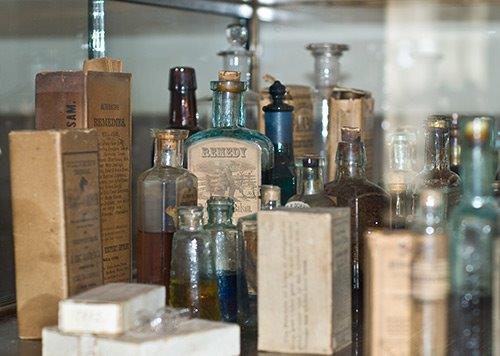Hall of fame: Elizabeth Garrett Anderson
 Elizabeth Garrett Anderson achieved many firsts for British women. She was the first
woman to qualify as a physician and surgeon, the co-founder of the first hospital
to be staffed by women, and the first woman to be appointed as a mayor and a magistrate.
Elizabeth Garrett Anderson achieved many firsts for British women. She was the first
woman to qualify as a physician and surgeon, the co-founder of the first hospital
to be staffed by women, and the first woman to be appointed as a mayor and a magistrate.
Born in London on 9 June 1836 to Newson and Louisa Garrett, Elizabeth was the second child of 11. When Elizabeth was 5, Newson moved the family back to his home county of Suffolk to buy and run a barley and coal merchant business.
The family settled in Aldeburgh, and with Newson’s business going from strength to strength, Elizabeth was sent to London for private tuition. It was here that she met Emily Davies, the feminist, women’s rights campaigner and co-founder of Girton College, Cambridge. A meeting in 1859 with Elizabeth Blackwell (the first woman to qualify as a doctor in the US) is said to have inspired her to study medicine.
Women doctors were unheard of in 19th-century Britain, and as Elizabeth’s attempts to study at a number of medical schools were denied, she enrolled as a nursing student at Middlesex Hospital. Though permitted to attend classes intended for male doctors, she was barred after complaints from other students.
As the Society of Apothecaries did not specifically forbid women from taking examinations, she passed their exams in 1865 and gained a certificate that enabled her to become a doctor. However, the society then changed its rules to prevent other women from entering the profession in this way.
In 1866, with her father's backing, she established a dispensary for women (St Mary’s) and in 1870 was made a visiting physician to the East London Hospital. Determined to become a qualified doctor, she taught herself French, and was awarded a medical degree in Paris, but was still refused entry into the British Medical Register.
She married James George Skelton Anderson, a partner in his family's shipping firm, the Orient Steam Navigation Company, in 1871, and took the name Elizabeth Garrett Anderson. The couple went on to have 3 children: Louisa (1873), Margaret (1875) and Alan (1877).
In 1872, she set up the New Hospital for Women at the St Mary’s Dispensary, later the London School of Medicine for Women, where she appointed her mentor, Elizabeth Blackwell, as professor of gynaecology.
Elizabeth’s determination paved the way for other women, and in 1876, the Medical Act was passed (Gazette issue 24354), permitting women to enter the medical professions. In 1883, she was appointed dean of the London School of Medicine for Women, which she had helped to found in 1874, and oversaw its expansion.
In 1902, she retired to Aldeburgh on the Suffolk coast. Her husband, James, passed away age 79 on 25 March, 1907. A deceased estate notice was placed in the Gazette (Gazette issue 28023), where Elizabeth is named as an executor, alongside her son, Alan.
In 1908, she became the mayor of Aldeburgh, to become the first woman mayor in Britain. She continued to be a fervent supporter of the suffragette movement, as did her daughter, Louisa.
She died on 17 December 1917 (Gazette issue 30603), without seeing the first votes for women. In 1918, the London School of Medicine for Women was renamed the Elizabeth Garrett Anderson Hospital (which is now part of the University of London). There are also a number of schools named after her. In 2005, Jill Vivien Kelsall, headteacher at the Elizabeth Garrett Anderson School in Islington, London, was awarded a CBE for services to education (Gazette issue 57509).
